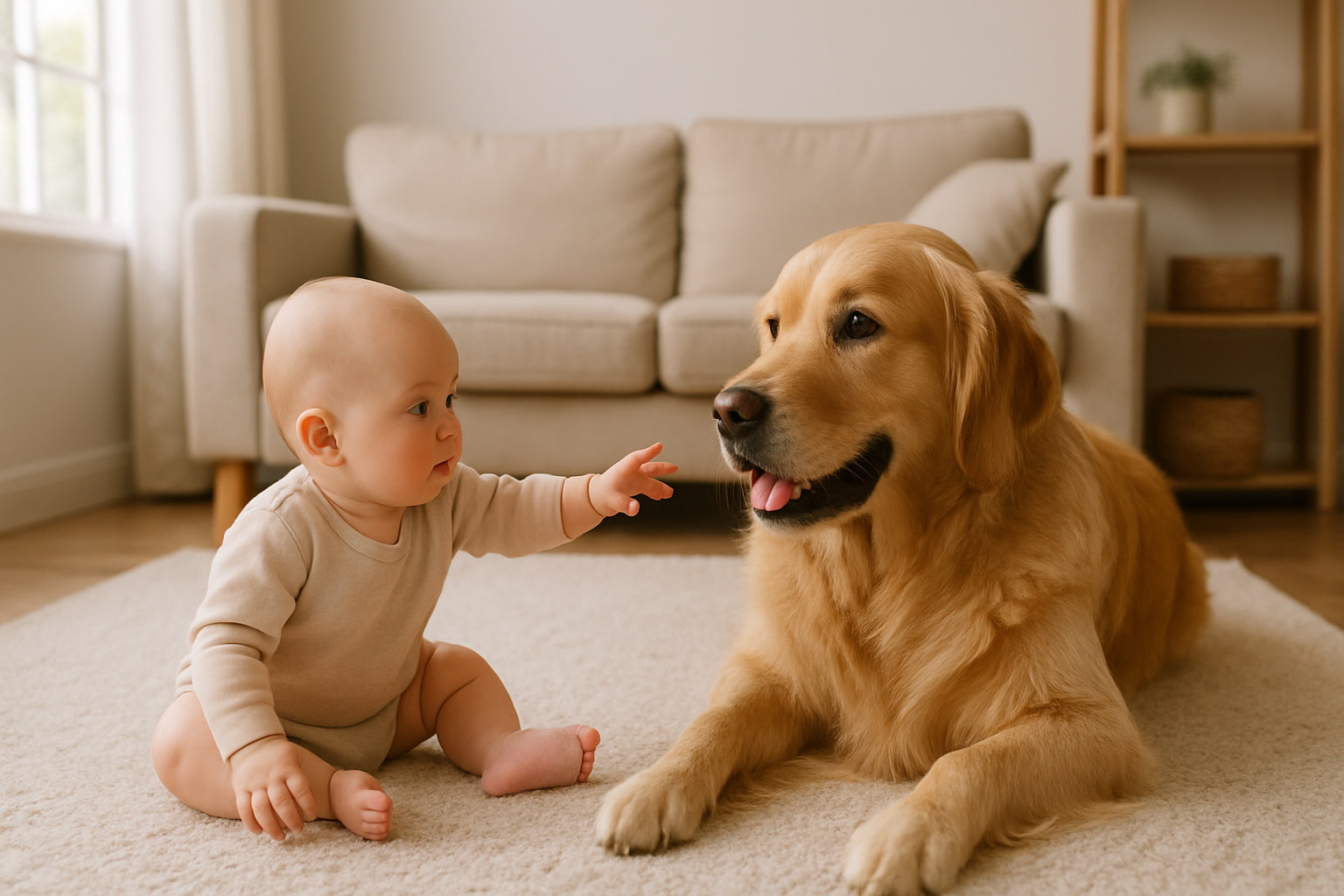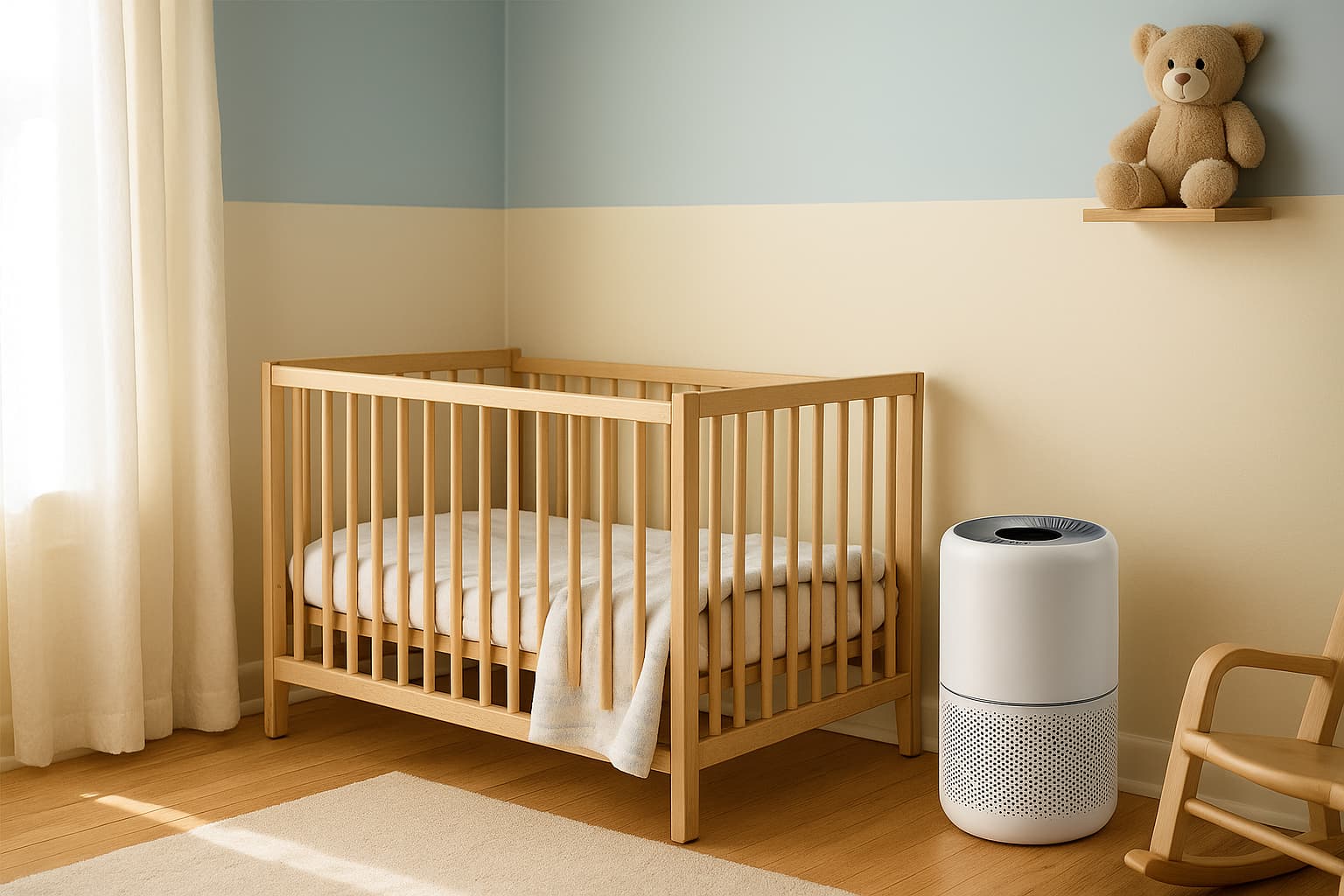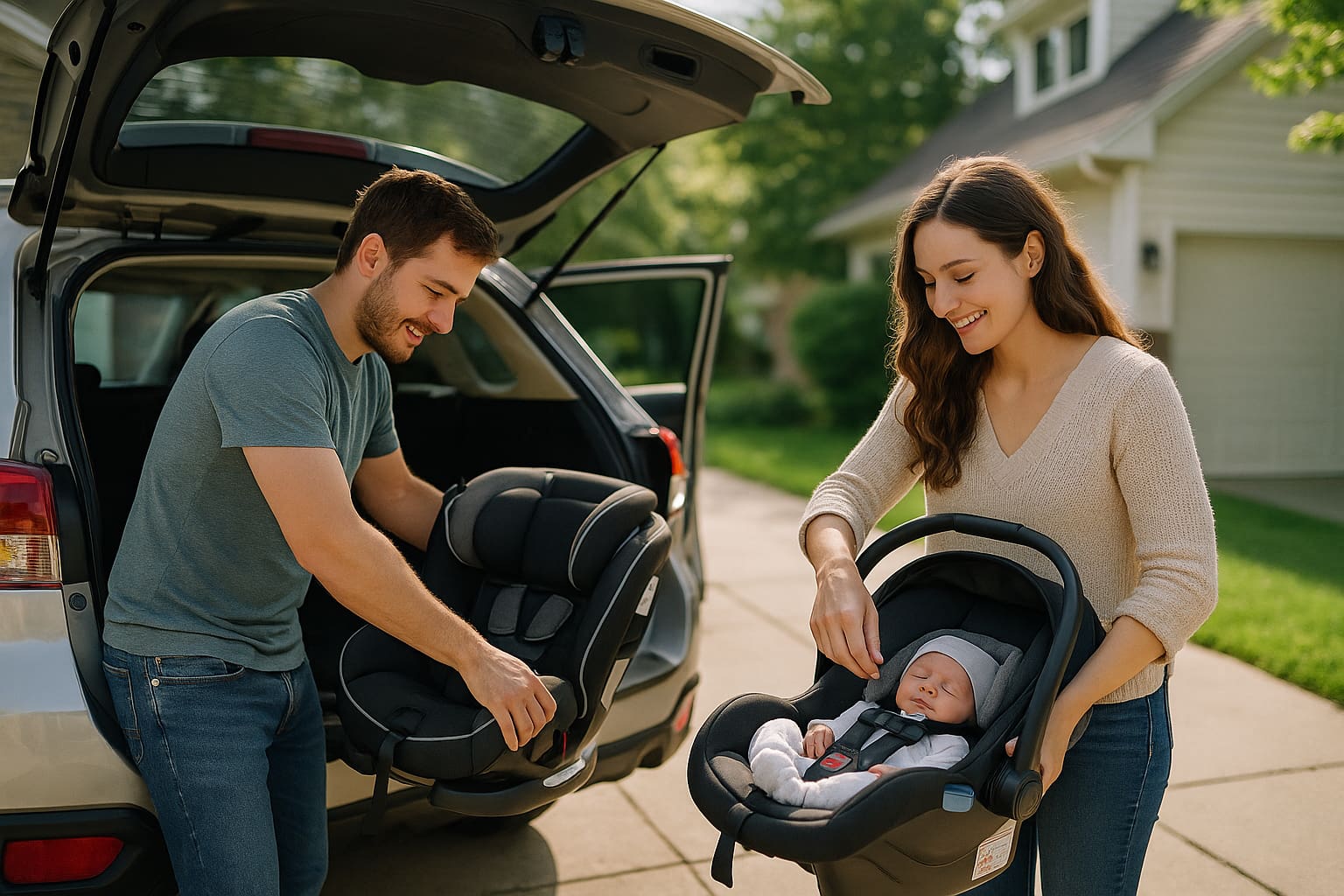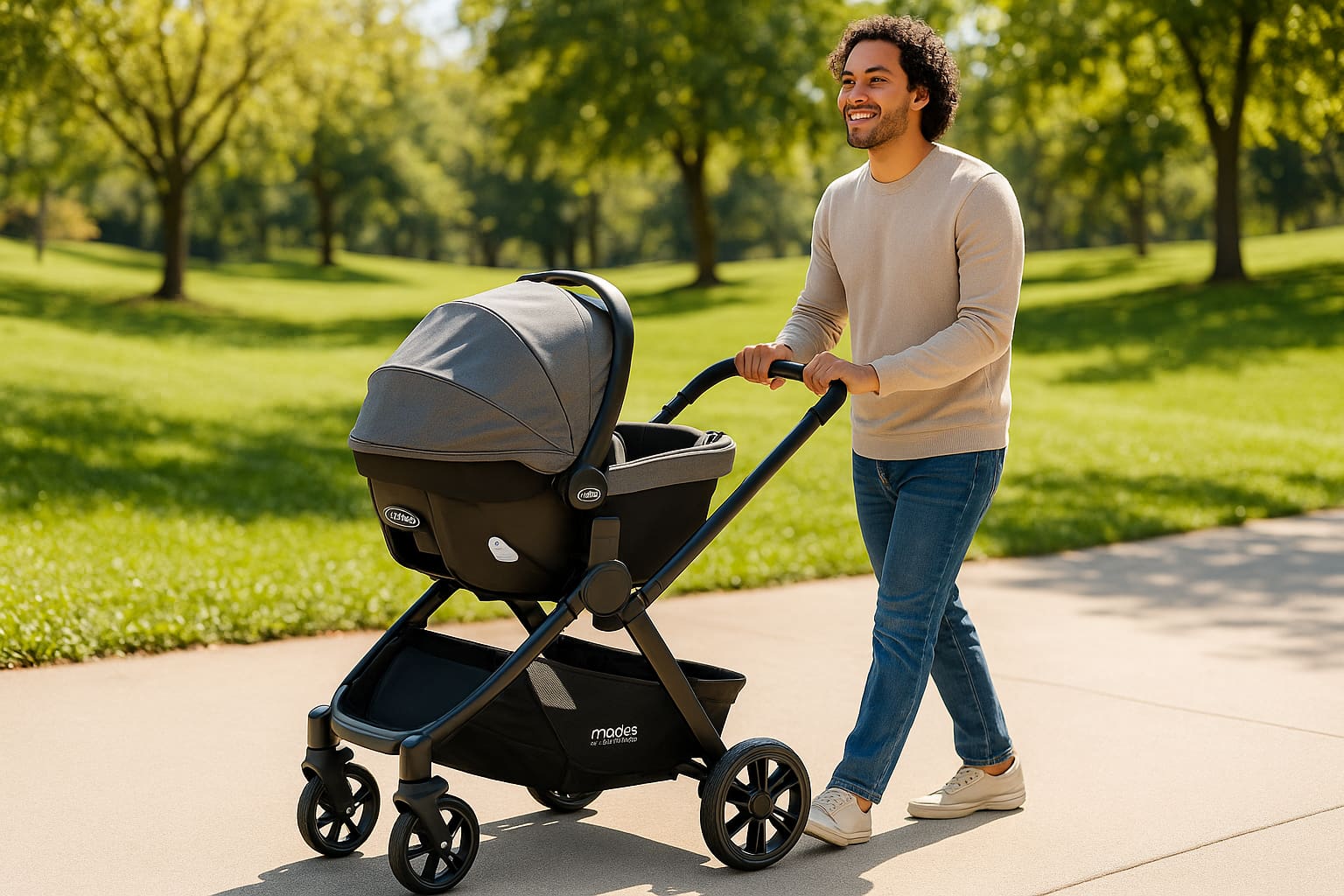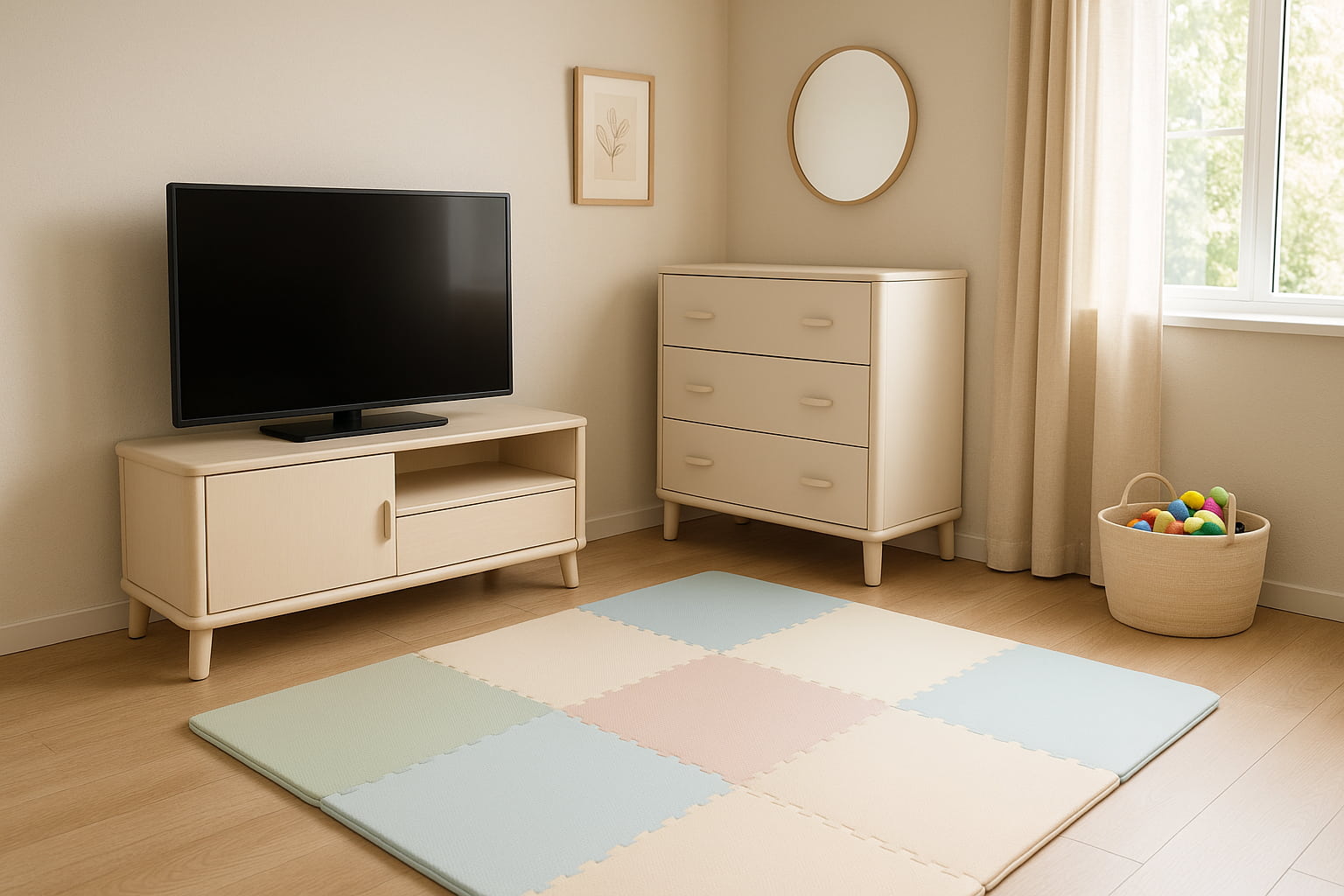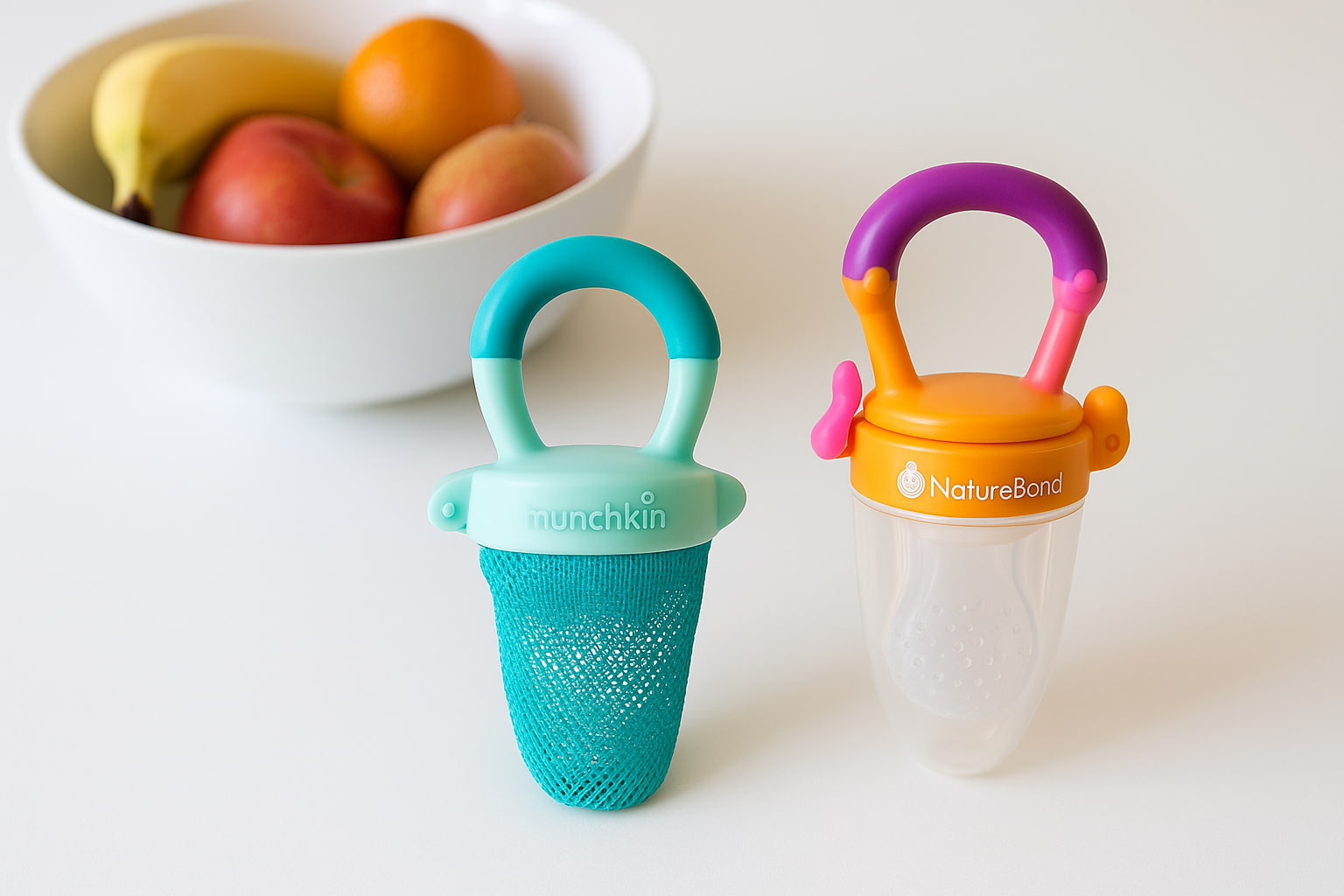😇 “But My Dog Would Never Hurt the Baby…”
That’s what I told myself when my daughter was born. Our golden retriever Max was loving, obedient, and incredibly gentle. But I quickly learned that baby alone with pets safety isn’t about trusting your pet, it’s about preparing for the unknown.
Even the calmest animals can react out of instinct. And babies? They’re unpredictable explorers with no boundaries.
If you’ve ever assumed, “It’ll be fine,” this guide is for you. It’s not about fear, it’s about smart supervision, safe routines, and setting up your space for peace of mind.
Here’s the truth: you should never leave your baby alone with pets, even for a minute. No matter how chill your dog is or how harmless your cat seems, babies and animals are a mix that needs constant supervision.
Let’s break down why, and more importantly, how you can keep your baby safe without making your pet feel left out.
⚠️ 1. Even “Well-Behaved” Pets Can Be Triggered
Pets rely on instincts, not logic. Even if your pet is friendly, they may react to:
✔ Sudden noises like a baby’s high-pitched cry
✔ Unexpected movements like flailing arms or crawling
✔ Scent changes from diapers, milk, or lotions
✔ Feeling replaced or ignored when the baby gets all the attention
And if they’re startled, overwhelmed, or jealous, they might nip, swat, growl, or run, all of which can put your baby at risk.
🐶 Have you seen any changes in your pet’s behavior after the baby came home? You’ll want to read our guide on how to read your pet’s body language around babies. It can help you spot warning signs before something goes wrong.
👀 2. Babies Explore Without Boundaries
Once babies start crawling, everything becomes an experiment to them:
✔ Grabbing fur
✔ Pulling tails
✔ Poking noses or ears
✔ Trying to share snacks or toys
✔ Crawling into the pet’s food area or crate
To a pet, this can feel like a threat even if your baby’s just trying to play.
That’s why direct supervision is non-negotiable. A quick bathroom break or phone call is all it takes for a curious baby to cross a line your pet didn’t invite.
🛋️ Trying to prevent these risky encounters before they happen? Start with your space. Our setup guide on how to create a safe pet-free zone for your baby will walk you through the most effective layout tips.
🔁 3. Accidents Happen Fast (and Silently)
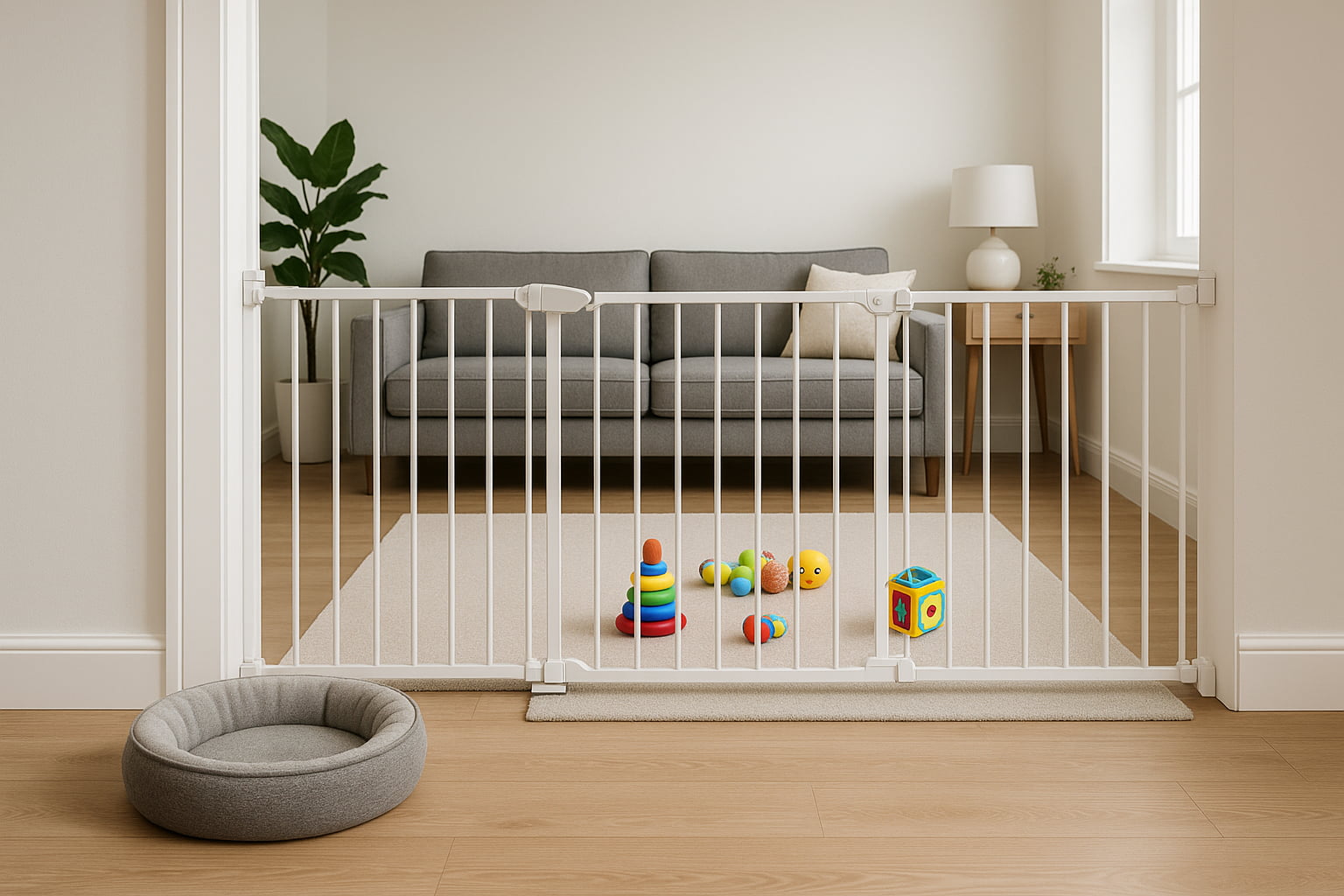
Pet bites and scratches are the obvious fears, but there are other risks, too:
✔ A large dog knocking over a baby
✔ A baby crawling into the pet’s crate and getting trapped
✔ A pet jumping into the crib
✔ Allergic reactions from licking or shedding
✔ Baby uses toys or pet food, both of which offer a choking hazard
🧠 Fact Check
According to the American Veterinary Medical Association (AVMA), it’s crucial to never leave a baby or small child alone with a dog. Even the most gentle and well-behaved pets can react unpredictably to a child’s sudden movements or sounds. Supervision is key to ensuring safe interactions between pets and young children.
That’s why it’s smart to use tools like gates, monitors, and baby-safe zones to minimize risks.
🔐 Need help choosing the right physical barrier for your home? We tested and reviewed the best ones in our roundup of Top 5 Pet Gates for Baby Safety in 2025. It’s a must-read for setting up layered protection.
💭 4. Pets Don’t Always Know Their Strength
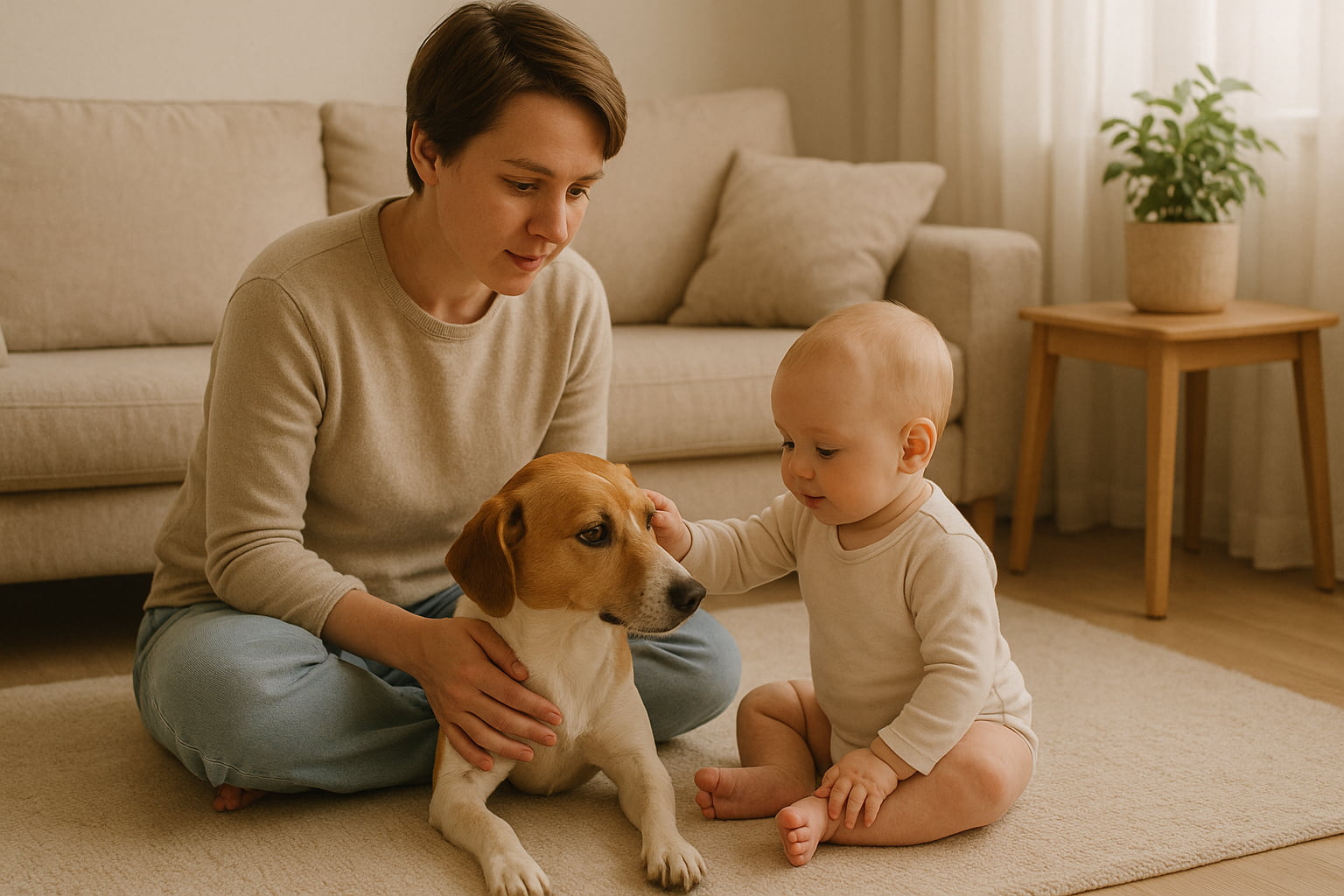
Even a loving lick or playful paw can accidentally hurt a baby.
Your dog doesn’t know that your 5-month-old’s head is fragile, or that your baby’s hand isn’t a chew toy. And your cat? One swipe from being overwhelmed could leave a mark.
🤯 Quick Reality Check:
✔ For a year, a baby’s skull remains soft.
✔ Their immune system is still developin
✔ They don’t understand how to interact with animals safely (yet)
That’s why you have to be the bridge between your pet and your child, modeling safe interactions and separating them when needed.
🚫 5. Never Assume “It’ll Be Fine This Time.”
All it takes is one unexpected moment.
Even if 99% of the time your pet is perfect, that 1% could leave a lasting injury or worse. You wouldn’t leave your baby alone near the stairs or the oven. Think of unattended pet interactions the same way.
Instead of relying on luck, choose preparation:
✔ Set up clear zones
✔ Use gates and baby monitors
✔ Train your pet early and consistently
✔ Supervise every interaction until your child is old enough to understand boundaries
🧸 Safety isn’t about paranoia, it’s about prevention.
❓ FAQ: Pets & Babies Alone
Can I leave my baby with the dog while I run to the kitchen?
No. Even short, unsupervised moments carry risk. Bring the baby with you or separate them safely.
What if my dog is gentle and has never bitten?
That’s great, but accidents happen. You should still supervise all baby-pet interactions.
Is it okay for pets to sleep in the nursery?
Only when you are present and they are not in the crib. Never leave them alone near the crib.
📝 Final Thoughts: Baby + Pet = Your Rules, Your Safe Space
No one knows your pet or your baby better than you do, and that’s why supervision matters. Even the gentlest dog can be startled. Even the calmest baby can grab a tail without warning.
But the good news? You don’t have to panic. With the right habits, tools, and awareness, you can keep everyone safe without sacrificing love or freedom.
Think of yourself as the middle ground, the bridge between fur and family.
✅ Create safe zones.
✅ Supervise every interaction.
✅ Watch for stress signals.
Your baby doesn’t stay small forever. But the habits you build now will last and keep everyone safe along the way.
🧩 Want to build a bond between baby and pet without the risks? Start slow and follow the process in our guide to Introducing Pets to Newborns Safely. It’s a gentle, step-by-step approach for long-term trust.
✅ Disclaimer:
This article shares insights based on parenting experience and public safety guidelines. It is not a replacement for medical or veterinary advice from a trained professional. Always consult your pediatrician or vet when managing pet-baby interactions.
✍️ Written By: Find For Baby
We help real parents build safe, pet-friendly homes. So babies and fur babies can grow up together with peace, love, and clear boundaries.
